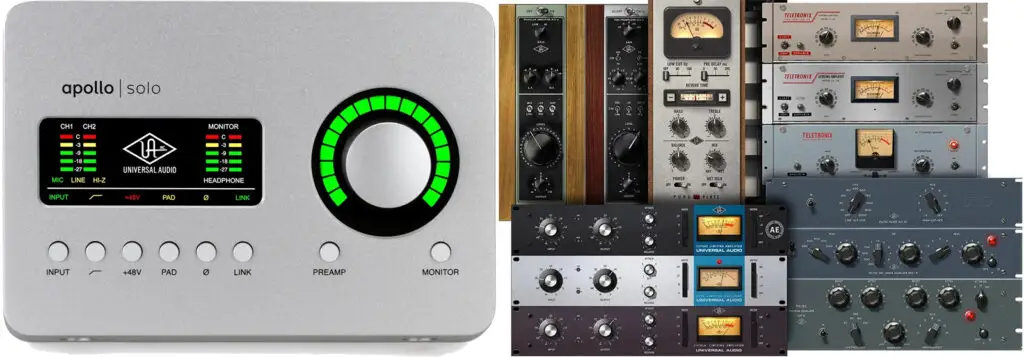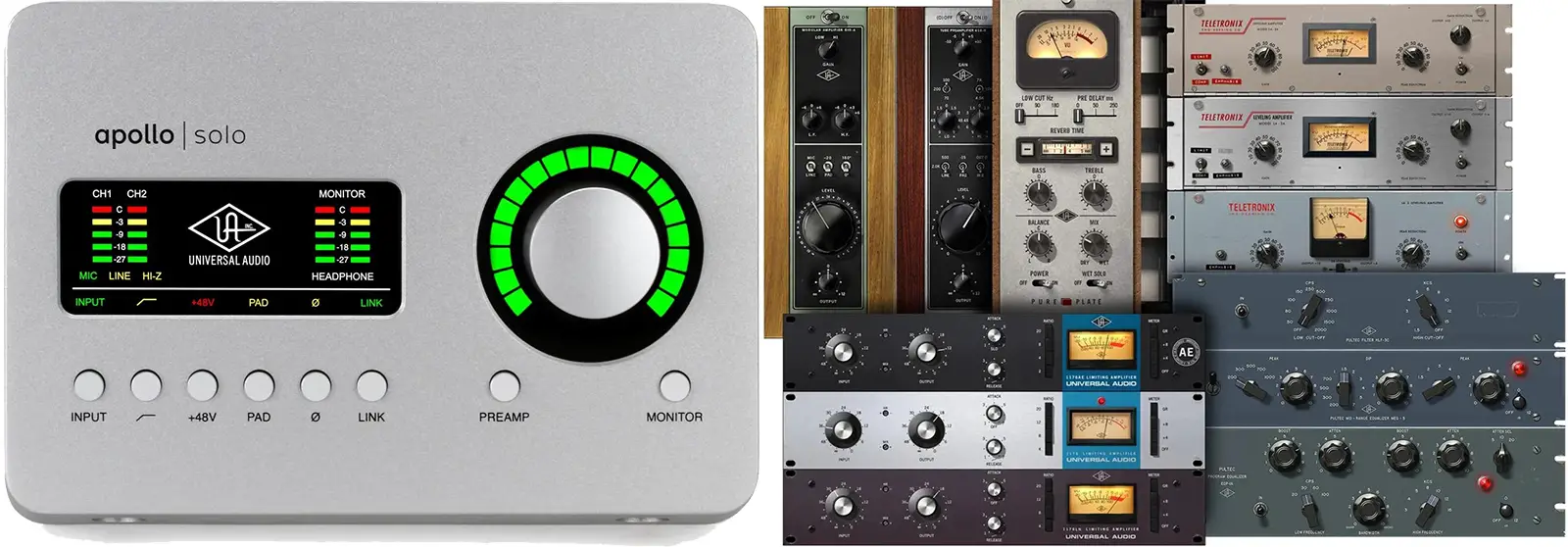In the world of audio production, the quality and capabilities of your equipment can have a significant impact on the sound of your final product. One feature that often comes up when discussing audio interfaces is Digital Signal Processing, or DSP. But what exactly is DSP in an audio interface?
Digital Signal Processing (DSP) in an audio interface allows for real-time effects processing, mix control, and load balancing, enhancing audio production by offloading these tasks from your computer’s CPU to the audio interface itself. It can improve sound quality, reduce latency, and provide more efficient use of system resources.
Do all audio interfaces come equipped with DSP, and if not, should you invest in one that does?
In this article, we’ll tackle the realm of DSP and its role in audio interfaces. We’ll explore what DSP is, how it functions within an audio interface, and discuss whether or not it can enhance your audio production.

Do Audio Interfaces Have DSP?
Some, but not all, audio interfaces do have Digital Signal Processing (DSP) capabilities.
DSP in an audio interface provides onboard processing power, allowing for real-time effects processing, mix control, and other audio adjustments without placing an additional load on your computer’s CPU.
Analog Devices is a producer of chips that go in some of these audio interfaces. They have a short tutorial on DSP.
This can be especially beneficial for music production, where the use of multiple plugins and tracks can quickly consume a significant amount of processing power.
Did you know some interfaces can even be used without a computer?
Not all audio interfaces have DSP, however. Whether an interface includes this feature can depend on the brand, the specific model, and the price point. Some popular brands that offer audio interfaces with DSP include Universal Audio, PreSonus, and Focusrite.
Here are some examples of audio interfaces with DSP:
- Universal Audio Apollo Twin: This interface has a built-in DSP chip that gives you access to a wide range of UAD plug-ins.
- Antelope Audio Zen Go Synergy Core: This interface is powered by Antelope’s Synergy Core DSP technology, which gives you access to a wide range of analog-modeled plug-ins.
- Roland Rubix 24: This interface has a built-in DSP mixer with EQ, compression, and reverb.
- PreSonus Revelator io24: This interface has a built-in DSP mixer with EQ, compression, gate, and limiter.
- MOTU UltraLite-mk5: This interface has a built-in DSP mixer with EQ, compression, and reverb.
While DSP can be beneficial, it’s not always necessary, depending on your needs. If you’re primarily recording simple tracks, or if you have a powerful computer that can handle heavy processing loads, you might not need an audio interface with DSP.
Also, I mentioned DSP mixers, which raises the question of if you need a mixer or an audio interface.
What Is DSP In Audio Interface?
DSP stands for Digital Signal Processing. In an audio interface, DSP can provide various functions that enhance the audio production process.
- Effects Processing: DSP allows for real-time effects processing, such as reverb, compression, or equalization, directly on the audio interface without needing to use your computer’s CPU. This can be particularly useful for recording, as it allows you to hear the effects while you’re performing, but without causing any extra latency.
- Mix Control: DSP can provide more precise control over the mixing process. You can adjust levels, pan, and other parameters for individual channels on the fly, again, without relying on your computer’s CPU.
Need to learn about gain? - Load Balancing: By handling some of the processing tasks, the DSP can lighten the load on your computer’s CPU. This can lead to smoother performance, particularly in situations where you’re working with a large number of tracks or using resource-intensive software.
- Latency Reduction: Since the DSP is processing the audio signals directly on the interface, it can help to reduce the latency that might otherwise occur when sending signals to your computer for processing.
The benefits of having DSP in an audio interface include:
- Reduced latency: When you use DSP effects, the processing is done by the interface’s own chip, which can reduce latency compared to using software effects on your computer.
- More processing power: DSP interfaces can often have more processing power than your computer, which can allow you to use more complex effects without causing your computer to slow down.
- More flexibility: DSP interfaces often give you more flexibility in terms of the effects you can use and how you can control them.
However, there are also some drawbacks to having DSP in an audio interface:
- Increased cost: DSP interfaces typically cost more than interfaces without DSP.
- Limited features: Some DSP interfaces may have a limited number of effects or features.
- Not as versatile: DSP interfaces may not be as versatile as software-based effects, as you are limited to the effects that are built into the interface.
If you need low latency and a lot of processing power, then a DSP interface may be a good option for you. However, if you are on a budget or you want more flexibility in terms of the effects you can use, then you may want to consider an interface without DSP.
Does DSP Make Sound Better?
Whether or not DSP makes sound better depends on a number of factors, including the quality of the DSP chip, the quality of the effects, and the way the DSP is used.
Digital Signal Processing (DSP) can certainly improve the quality of audio in a variety of ways, but it doesn’t inherently make the sound “better.”
In general, DSP can be used to improve the sound quality of audio signals in a number of ways, including:
- Effects Processing: DSP can apply effects like reverb, equalization, and compression in real-time, which can help to enhance the sound of a recording. These effects can add depth, adjust the tonal balance, and manage the dynamic range of the audio, all of which can improve the perceived sound quality. However, the effectiveness of these effects greatly depends on how they are used.
- Correcting for frequency response errors: DSP can be used to correct for frequency response errors in speakers or headphones. This can result in a more accurate and balanced sound.
- Noise Reduction: DSP can be used to implement noise reduction algorithms, which can help to eliminate unwanted noise from the audio signal, thereby enhancing the clarity of the sound.
- Sound Field Processing: In some audio systems, DSP is used to create virtual sound fields that can make the audio seem as though it’s coming from different directions. This can enhance the listening experience, particularly for music and movies.
- Audio Restoration: DSP can also be used in audio restoration, where it can help to repair old or damaged audio recordings.
While DSP can enhance audio in these ways, it’s not a magic fix for bad sound. The quality of the original recording, the quality of the audio equipment you’re using, and the skill of the person applying the DSP effects all play a significant role in the final sound quality. Overuse or improper use of DSP can sometimes result in an unnatural or overly processed sound.
DSP is a powerful tool that can improve sound quality when used correctly, but it’s not a guarantee of better sound on its own. Here are some additional things to consider when using DSP:
- The quality of the DSP chip: The quality of the DSP chip will have a significant impact on the sound quality of the audio signals. A high-quality DSP chip will be able to process audio signals more accurately and efficiently, resulting in better sound quality.
- The quality of the effects: The quality of the effects will also have an impact on the sound quality of the audio signals. A high-quality effect will sound more natural and realistic, while a low-quality effect will sound more processed and artificial.
- The way the DSP is used: The way the DSP is used can also affect the sound quality of the audio signals. If the DSP is used improperly, it can actually degrade the sound quality. It is important to experiment with different settings and effects to find what works best for you.
Conclusion
Digital Signal Processing, or DSP, plays an integral role in many audio interfaces, offering a range of benefits from real-time effects processing to load balancing and latency reduction. However, it’s important to remember that not all audio interfaces have DSP, and its presence does not automatically guarantee superior sound quality.
The effectiveness of DSP greatly depends on how it is used, the quality of the original recording, and the overall audio equipment setup. While DSP can provide powerful enhancements and added flexibility in audio production, it should be considered as part of a larger toolbox rather than a standalone solution for better sound.
When choosing an audio interface, consider your specific needs, the capabilities of your computer, and your budget. If you’re working with a large number of tracks or using resource-intensive software, an audio interface with DSP might be a valuable addition to your setup. But if you’re just starting out or working on simpler projects, you might not need the extra processing power that DSP provides.
In the end, understanding the role and benefits of DSP in an audio interface can help you make an informed decision that best serves your audio production needs. Happy recording!


